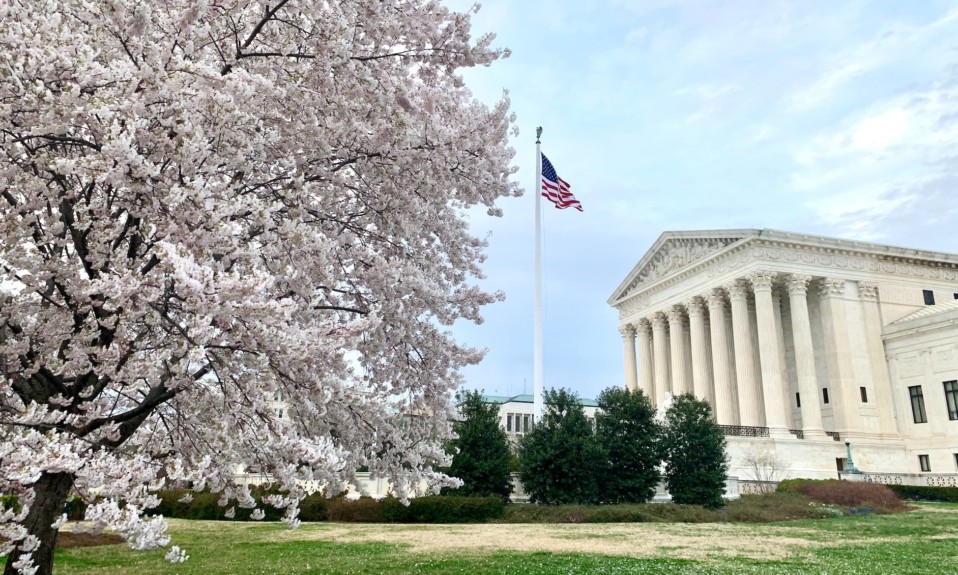The high court is weighing how much discretion doctors have in prescribing opioids
By Mark Mravic
The U.S. Supreme Court last week heard arguments in a case whose issues lie at the heart of the opioid epidemic: How much leeway should doctors be given in prescribing powerful and dangerous opioids? Who has the authority to determine how much is too much when treating patients—especially those with chronic and severe pain? When does heavy prescribing cross the line into drug dealing?
The case before the court combines the appeals of two doctors: Xiulu Ruan of Alabama and Shakeed Kahn, who practiced in Arizona and Wyoming. Each was sentenced to more than 20 years in prison for operating what the government characterized as “pill mills.” At trial, prosecutors said Ruan and his partner issued more than 300,000 opioid prescriptions between 2012 and 2015, including an extremely potent form of fentanyl approved only for end-of-life cancer. They also said many of the prescriptions were filled by pharmacies that he operated, and that he owned stock in manufacturers of the drugs he prescribed. Ruan and his partner grossed more than $20 million over four years, and when federal authorities busted them, they seized millions of dollars in property, including a fleet of Bentleys, Lamborghinis and other luxury cars.
Kahn operated a pain clinic in Arizona that accepted payment only in cash and property, including guns; when local pharmacies stopped filling his opioid prescriptions, he opened another clinic in Wyoming. Prosecutors said Kahn’s prescriptions were often based on the amount his patients could pay rather than medical need, and his fees closely tracked the street price of the drugs. Kahn also made his patients sign a “drug addiction statement” vowing that he was not a drug dealer, they weren’t “addicts,” and they’d be liable for $100,000 in the event of criminal or civil action against him as a result of a complaint. An Arizona patient of Kahn’s, Jessica Burch, died of an overdose in 2015.
Points of Law
Rather than diving into those sordid details, however, the high court is aiming to resolve a thorny point of law raised during the cases. At the heart of Ruan’s and Kahn’s appeals of their convictions is a difference across U.S. legal jurisdictions in how they interpret the language of the Controlled Substances Act (CSA) and other Drug Enforcement Agency (DEA) regulations, and how those interpretations influence jury instruction. In these cases—conducted in the 10th and 11th U.S. Circuits—the trial juries were told they should base their decisions primarily on whether the doctor deviated from standard medical practice and give less weight to his state of mind—that is, whether he was prescribing in “good faith” and for what he believed was a legitimate medical purpose. Other U.S. circuits, however, allow juries to more strongly consider intent and “good faith” arguments.
“The ‘legitimate medical purpose‘ is a very vague thing upon which reasonable people can disagree.”
—Justice Brett Kavanaugh
An array of health policy experts, legal scholars and pain medicine advocates filed briefs to the Supreme Court supporting the “good faith” argument, or at least urging the justices to reconcile the diverging interpretations and establish a clearer legal standard for culpability. Advocates argue that pain management is an evolving practice, that doctors should have discretion to explore new therapies, and that juries may be challenged to understand the medical complexities involved in whether a doctor conformed to an objective standard. Even those supposedly objective standards, critics argue, are based on subjective language—words like “reasonable,” “legitimate,” “appropriate,” “accepted” and “proper” that leave plenty of room for interpretation.
Points of Language
Indeed, during the arguments at the Supreme Court on March 1, justices spent a good deal of time parsing the text of the CSA, which states that it’s illegal “except as authorized” for someone to “knowingly or intentionally” distribute a controlled substance. Also coming under scrutiny was DEA language stating that a prescription for a controlled substance “must be issued for a legitimate medical purpose by an individual practitioner acting in the usual course of his professional practice.” At one point the proceedings took a turn into elementary school grammar, the justices pondering what class of words adverbs such as “knowingly and intentionally” can modify.
The discussion was wide-ranging:
- A lawyer for Ruan told the justices that medical standards are “a constantly evolving matter” and that “deference to patients and their illness and their doctors requires a subjective standard.” Along those lines, Justice Amy Coney Barrett wondered whether a doctor’s discretion to go outside objective standards could be compared to someone traveling far over the speed limit because of a medical emergency.
- Addressing the regulatory language, Justice Brett Kavanaugh said, “The ‘legitimate medical purpose’ is a very vague thing on which reasonable people can disagree” and noted that a jury decision in a “close call” case where experts differ might still send a doctor to prison for a mandatory 20 years.
- Justice Samuel Alito noted that the term “good faith,” which forms the basis of the doctors’ appeal, doesn’t actually appear in any of the regulatory language.
- As for the burden of proof, Justice Neil Gorsuch took issue with a government lawyer’s argument that there was already precedent for an “objective honest-effort standard” to determine a doctor’s guilt. “Objective honest effort,” Gorsuch said, is “a contradiction in terms.”
The Wider Context of the Supreme Court Case
As frustratingly semantic as the debate sometimes was, the real-world implications are significant. This case in front of the nation’s highest court is taking place amid a swinging pendulum in opioid prescribing. In 2016, in the face of steeply rising addiction and overdose rates, the Centers for Disease Control and Prevention (CDC) issued guidelines for opioid prescriptions. Those weren’t meant to have the force of law, but some states codified opioid limitations and established strict caps. That caused a chilling effect in which many practitioners sharply reduced their opioid prescribing or even stopped altogether, out of fear of running afoul of the law. Perversely, addiction and overdoses rose precipitously as the market for illicit opioids boomed. The CDC’s 2022 update is meant to relax the guidelines and allow for more flexibility in opioid prescribing, while strongly encouraging doctors to seek alternatives in the first place.
So where is the Supreme Court case headed? Analysts say it’s hard to predict the decision—which is expected this summer—as the justices’ questioning didn’t follow regular partisan lines. Most experts, however, see the court leaning toward the doctors’ argument for a “good faith” standard. But even if their cases are overturned, experts say it would be unlikely Ruan or Kahn would walk free on retrial, since their activity was so extreme.
Either way, a decision would establish much-needed clarity in the complex and muddy area of opioid medication.
Top photo: Bill Mason














